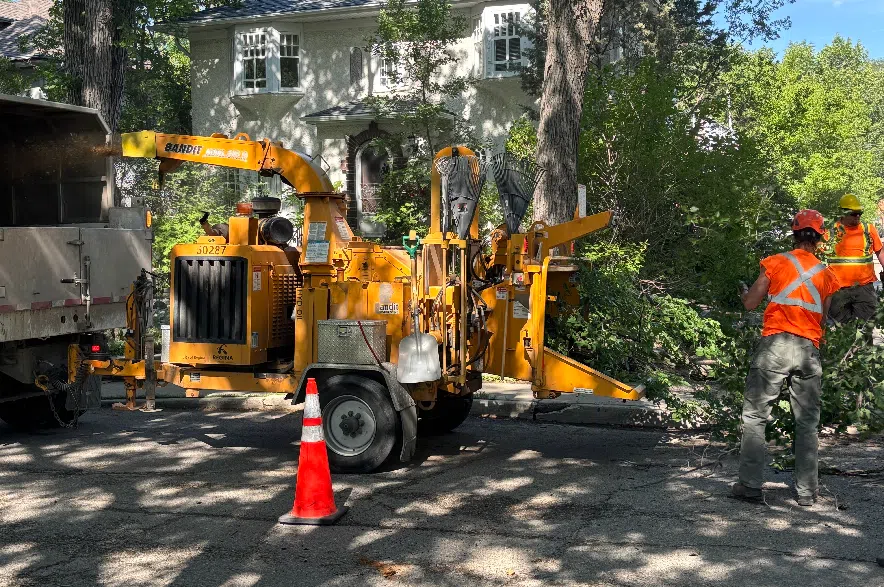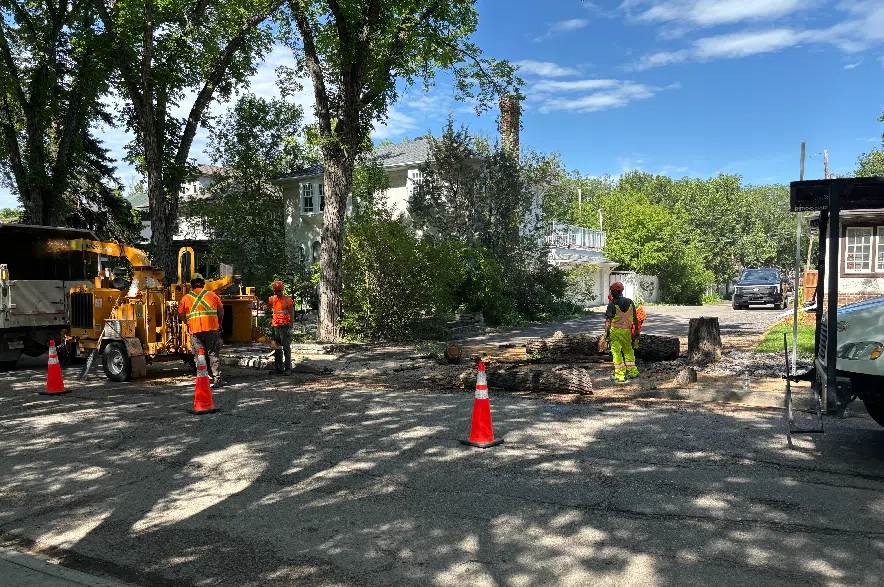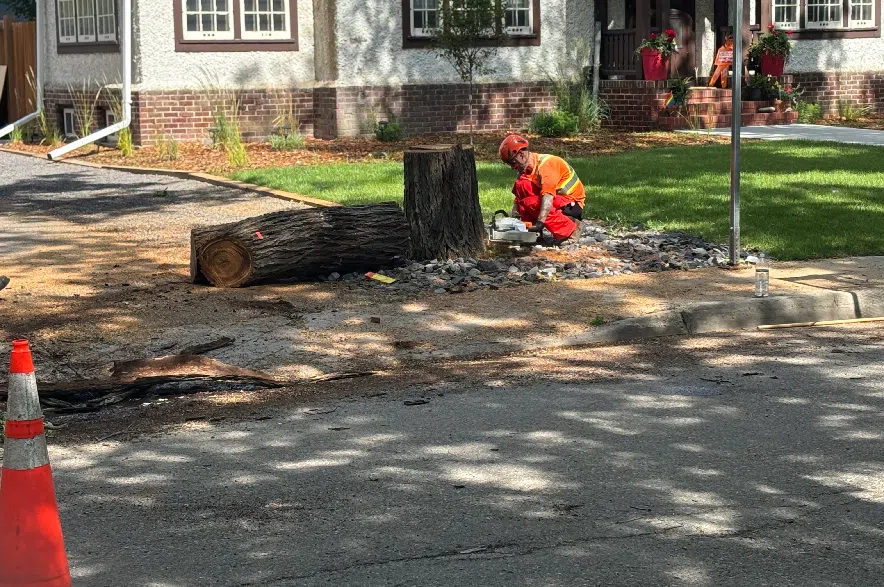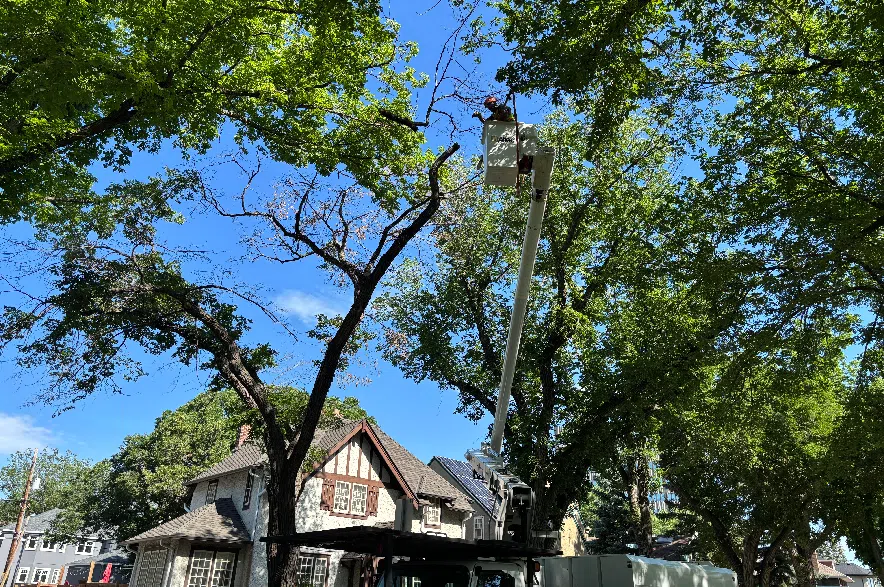Regina’s urban forest is facing a worrying start to summer as Dutch elm disease is spreading faster than previous years.
City crews have confirmed 17 elm trees infected with the disease so far in 2025, signaling a potentially challenging season ahead.
Read More:
- ‘The worst year we’ve ever seen for Dutch Elm Disease in Regina’
- Dutch elm disease found near science centre in Wascana
- Sask. producers struggling with dry conditions despite rainstorms: Crop Report
Ray Morgan, acting director of parks and open space services for the City of Regina said the numbers are troubling.
“We have seven confirmed cases just this week of Dutch elm disease, bring our total so far to 17,” Morgan said during a media availability at 75 Leopold Crescent, where crews were removing an infected tree.
“Last year in Regina, we had 85 elm tress infected by Dutch elm disease, so we’re watching this closely.”
Dutch elm disease is caused by a fungus spread by bark beetles. When the beetles bore into an elm tree, the fungus enters the tree’s vascular system, choking off the flow of water and nutrients. The result is wilting, yellowing leaves, dying branches and eventually a dead tree.
Morgan said the Cathedral neighborhood, where he spoke to reporters on Thursday, is heavily populated with American elms.
“In Regina we have approximately 180,000 trees, and about 60,000 of those are American elm,” he explained. “So when we have Dutch elm disease reported, it has a major impact and we take it very seriously.”

Branches are feed into a wood chipper as city crews work to remove a tree and clean up debris. (Jacob Bamhour/980 CJME)
City crews monitor the urban forest closely, using beetle traps and regular inspections, but residents also play a critical role in early detection and prevention. The city is urging homeowners to watch for symptoms like sudden wilting or yellowing of individual branches – known as flagging – rather than an entire tree declining all at once.
“If you see a specific branch turning yellow or brown, like the one behind me today, that’s a classic symptom of Dutch elm disease,” said Morgan.
City workers take samples from trees they suspect to be infected and send them for lab analysis, which typically takes seven to 10 days.
A major factor in controlling the spread is preventing the beetles from finding new hosts. For that reason, provincial regulations ban the storage, transport and use of elm wood.
“Firewood acts a host for these beetles,” Morgan said.
“People may not know they’re bringing elm into the city, or cut down a tree in their yard and store it as firewood; that’s how neighboring trees can get infected.”

Crews section and clear a large tree trunk during a tree removal in Regina’s Cathedral neighborhood. (Jacob Bamhour/980 CJME)
City crews handle most tree removals at no cost to homeowners if the tree is on public property. For private trees, residents are encouraged to contact the city for an inspection before taking any action.
Meanwhile, Regina is diversifying its urban forest to avoid over-reliance on elm trees.
“Years ago, there were only two or three tree species in the city,” Morgan said. “Now there’s about 20 to 25 different species. We’re working hard to avoid monocultures that can be devastated by a single disease.”
Residents who suspect Dutch elm disease were asked to call Service Regina at 306-777-7000 or report concerns online at Regina.ca. More information about Dutch elm disease, including prevention tips, can be found on the city’s website.











